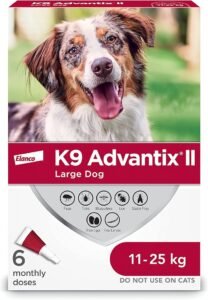Reducing anxiety in dogs can be near impossible when you don’t know how and seeing them in a state of panic can leave you feeling anxious too. By following these simple anxiety-relieving methods, you should be equipped with everything you need to calm your dog’s anxiety in no time!
Exercise
Incorporating some physical activity and exercise with your pet is not only can be a great bonding experience, but it can also help to burn off some excess pent up energy and reduce stress. Exercise comes with a host of other benefits including keeping your pet at a healthy weight that helps to prevent against many health-related problems associated with obesity, muscle toning and mental stimulation that all lead to a better quality of life.
Rubber Hollow Chew Toys
Buying a product that you can fill with a small amount of tasty treats that takes a while to get out, such as putting some peanut butter in a rubber hollow chew toy and freezing it, will certainly engage your dog for a while and similarly wear them out.
Crate Training
There are so many benefits to crate training that it’s no wonder practically any dog trainer worth their salt recommends it. When a dog is feeling anxious having a safe place for them to retreat and settle down is crucial. Try placing their crate in the corner of a room with a blanket wrapped around it to block out light. Having their crate associated with safety and with the darkness blocking out any excess stimuli, it becomes the perfect place for an anxious dog to go. Placing their favorite toys in the crate is also a perfectly fine idea too!
Keeping Cool
Have you ever come home excited and full of energy? Chances are your dog was just as happy and excited as you were! That’s not because your dog got the e-mail about how you’d been promoted at work—but because you were excited it made them excited. Conversely, if you slumped open the door and groggily entered your home completely unenthusiastically, your dog would slowly but surely start to feel sad alongside you and might even begin whimpering. This same principle applies to anxiety as well. If you’re anxious—they’re anxious, and if they’re afraid and you react explosively it only amplifies their fear. So, try to be in control of your emotions around your best buddy so they can be in control of theirs.
Stop Rewarding Bad Behavior
We’ve probably all done it at some point. Your dog’s been barking for ten minutes straight at your neighbor mowing the lawn and you give them a treat so they’ll stop. Maybe they were scared, and you just leaned down to pet them. Sound familiar? While it may be convenient or comforting for us to have these quick fixes, it teaches our pet that their behavior isn’t just okay—but we approve of it, even reward it. But just because you shouldn’t give them positive reinforcement doesn’t mean you should ignore them either, which brings us to the next golden tidbit.
Train Your Dog
There are quite a few resources for training your best pal, and spending at least 30 minutes a day training them is never a bad idea. The saying, ‘old dogs can’t learn new tricks’ isn’t exactly true—it’d be more accurate to say, ‘old dogs rarely break old habits on their own.’ But, regardless of the age of your dog, you can always begin training and if you need help then hiring a trainer is always a smart choice. That way, when they’re feeling anxious you can regain control and have their undivided attention on you instead of the object of anxiety.
Pressure Vests
Using a pressure vest for anxiety that you wrap around can help for some dogs. The pressure is supposed to simulate a calming sensation like that of a hug and provide your dog comfort. Although there is little research to confirm its benefits, there is anecdotal evidence from pet parents who say that it helps ease their dog’s anxiety.
Desensitization
If they’re anxious around other dogs—socialize them. Bring your dog to doggy play dates and slowly work up towards going to the dog park. Driving in cars are scary? Simple—take them on short one or two minute rides and reward them frequently with treats, slowly working up to longer drives. The concept is simple: find what provokes anxiety in your dog and slowly expose them to those situations until they realize there’s nothing to be afraid of.
Alternative Treatments
If you’re still having a difficult time calming your dog’s anxiety then consider seeing a vet and asking about other options such as supplements and medications. The reason I didn’t start the list off with these, even though they’re certainly the easiest, is that some do come with side effects and we want to try to avoid giving medication unless all other strategies don’t work. If you do decide that you need to go this route, make sure to speak with a veterinarian about what would work best for your dog.
By employing some of these strategies, with time and patience, your dog should be well on their way to being a lot less anxious. You’ve got this!











